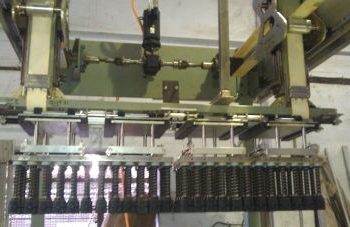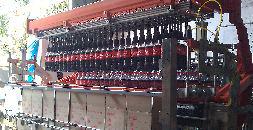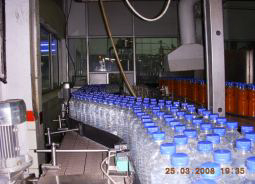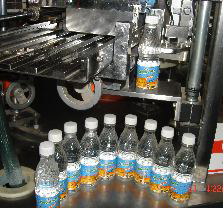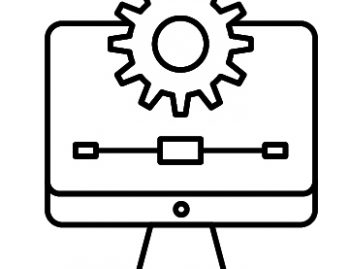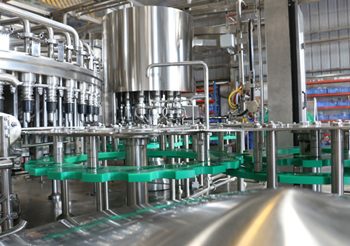
Introduction to Filling Machines
Filling machines play a crucial role in the manufacturing and packaging industries. Whether you’re bottling beverages, filling jars with sauces, or packaging creams, these machines ensure efficiency and consistency. However, like any piece of equipment, they require regular attention to perform at their best.
If you’re new to managing a filling machine or just looking to refine your maintenance routine, this guide is tailored for you. Regular upkeep not only enhances performance but also extends the lifespan of your machinery. Let’s dive into what it takes to keep your filling machine running smoothly and efficiently!
Importance of Regular Maintenance
Regular maintenance of your filling machine is crucial for its longevity and efficiency. Just like any complex piece of machinery, these systems require consistent attention to perform at their best.
Neglecting routine checks can lead to unexpected breakdowns. Such failures not only disrupt production but also incur costly repairs and downtime. By investing time in regular upkeep, you can avoid these headaches.
Maintenance helps identify wear and tear before it escalates into a major issue. It ensures that all components are functioning harmoniously, which translates to more accurate fills.
Moreover, properly maintained machines produce higher quality products with fewer defects. This boosts your reputation and customer satisfaction in the long run.
In essence, prioritizing regular maintenance fosters a reliable production environment while protecting your investment from premature failure.
Essential Tools for Maintaining Your Filling Machine
To keep your filling machine running smoothly, you’ll need a few essential tools. Start with basic hand tools like wrenches and screwdrivers. These come in handy for making quick adjustments.
A multimeter is invaluable for checking electrical components and ensuring everything functions properly. Regular inspections can prevent costly breakdowns down the line.
Don’t forget about cleaning supplies! Brushes, cloths, and suitable detergents are vital for removing residue buildup. A clean machine operates more efficiently.
Lubricants play a crucial role too; they reduce friction on moving parts. Make sure to use the recommended type based on your machine’s specifications.
Have spare parts readily available—seals, gaskets, or valves can wear out over time. This proactive approach minimizes downtime and keeps operations seamless.
Step-by-Step Guide to Maintaining Your Filling Machine
Begin by powering down your filling machine. Safety is the top priority, so ensure it’s completely turned off and unplugged.
Next, inspect all components for wear and damage. Look closely at seals, gaskets, and hoses. Replace any that show signs of deterioration.
Clean the machine thoroughly to remove residue and buildup. Use appropriate cleaning agents for your specific type of filler—this can dramatically enhance performance.
Lubricate moving parts with high-quality grease or oil based on manufacturer recommendations. This reduces friction and keeps everything running smoothly.
Adjust settings as necessary according to product specifications. Calibration ensures accuracy in every fill cycle.
Run a test batch after maintenance is complete. Monitor the process carefully for any irregularities before resuming normal operations.
Common Issues and Troubleshooting Tips
Filling machines can encounter various issues during operation. Identifying these problems early is crucial for maintaining efficiency.
One common issue is inconsistent fill levels. This could be due to incorrect calibration or a worn-out pump. Regularly check the machine’s settings and replace parts as needed.
Another frequent concern is leaks. Inspect seals and hoses regularly for wear or damage. Replacing faulty components promptly prevents product loss.
If your machine experiences jams, ensure that no debris blocks the filling path. Cleaning the area thoroughly can often resolve this issue quickly.
Strange noises may indicate loose parts or improper alignment. Conduct routine checks to tighten screws and align moving components properly to keep everything running smoothly without disruptions.
Best Practices for Extending the Lifespan of Your Filling Machine
To maximize the lifespan of your filling machine, consistency is key. Establish a regular maintenance schedule and stick to it. This ensures that wear and tear are addressed promptly.
Keep the machine clean. Residue buildup can lead to inefficiencies and damage over time. A simple daily wipe-down goes a long way in preserving its components.
Use quality materials for both operation and maintenance. Investing in high-grade parts will minimize breakdowns and extend functionality.
Train your staff properly on operations and troubleshooting techniques. An informed team can spot potential issues before they escalate into costly repairs.
Always monitor performance metrics closely. Identifying trends can help you anticipate necessary adjustments or upgrades before problems arise. Regular analysis fosters proactive care rather than reactive fixes, ensuring longevity for your equipment.
Conclusion: Investing in Proper Maintenance for Long-Term Success
Taking the time to maintain your filling machine is an investment in both its performance and longevity. Regular upkeep not only minimizes costly repairs but also ensures that your production line operates smoothly. By following a structured maintenance routine, you can enhance efficiency, reduce downtime, and improve product quality.
Utilizing essential tools for maintenance will make the process more manageable. Additionally, understanding common issues helps you troubleshoot effectively when problems arise. Incorporating best practices into your daily operations fosters a culture of care around your machinery.
By prioritizing these strategies, you’ll see significant benefits over time. A well-maintained filling machine translates directly to increased productivity and profitability for your business. Investing in proper maintenance today paves the way for success tomorrow.
